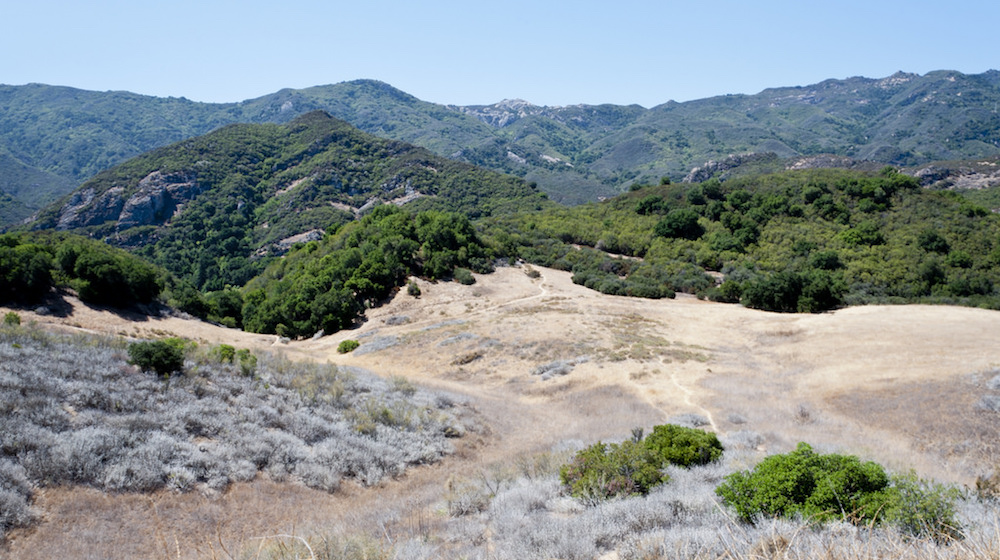For the Provocations series, in conjunction with UCI’s “Fire & Ice: The Shifting Narrative of Climate Change” conference.
I became an environmentalist in a way that echoes the growth of environmentalism itself: by loving undeveloped spaces and wanting to protect them. I was a Girl Scout in New York who had never seen anything west of the Mississippi, but one year I sold more Girl Scout cookies than anyone else in my troop and my prize was a book called “Scenic Wonders of America: An Illustrated Guide to Our Natural Splendors.” It was filled with the most fabulous photographs — of mountains, forests, waterfalls, and rugged coastlines, all of which took my breath away and which I immediately believed, from the distance of my suburban bedroom, were important to preserve from threat.
I have since been lucky enough to learn that these landscapes don’t disappoint firsthand. I’ve hiked over ice floes in Glacier National Park, rafted down the Snake River below the Teton Mountains, and gawked at bear cubs playing in Yosemite Valley. I’ve had the joy of showing some of these places to my kids, too. My convictions about protecting unique lands have become more informed with experience, but they haven’t wavered. Once I got my law degree, I began using laws like the Endangered Species Act and the National Environmental Policy Act to oppose proposals that threaten wild spaces and wildlife.
Then I began working, as many in my field have done, on the monumental challenge of climate change. Climate change advocacy also has roots in the urge to protect far-away, precious things. When I ask my law students to name the first image that comes to mind when they think about climate change, often they will answer “polar bears” or “melting ice caps.” And it’s true that climate change is the greatest and most formidable threat to our world’s natural areas and to many of its species. But our own backyards should also be top of mind when we think about climate change harms.
Climate change has brought my work closer to home. It is a social justice problem, a public health problem, a threat to food and water supplies, a national security priority, and an unprecedented economic challenge, among other things. In Los Angeles, asthmatic kids face more hospitalization because hotter days make urban air quality worse. The elderly and the poor are often least able to adapt to deadly heat waves. Many of our California neighborhoods are newly threatened — or have already been devastated — by megafires fed by persistent drought and heat.
These local effects will deepen. My colleagues at UCLA have done groundbreaking work translating climate change models to a neighborhood scale for southern California, and their findings are stark. By the time my kids are in their thirties, Los Angeles will face triple the number of days above 95 degrees each year, compared to historical norms. Wet and dry extremes in precipitation will increase, meaning we will see both more extremely dry years and more unprecedented storms. Our water supply from the Sierra snowpack will shrink. All of this will stress our infrastructure and bring more disease and death. (As I write this, my campus building has flooded and, much more importantly, several L.A. neighborhoods have been evacuated because an “atmospheric river” is pouring water down on us; expect more of that.)
The truth is, our communities have been built on an assumption of relative stability: of temperatures, of coastlines, of water supply, of fire risk. That stability is eroding, putting all of us in harm’s way. As impacts worsen, our efforts to combat climate change are increasingly embracing the fact that this is a fight to protect our own neighbors. Many folks have known this all along. Some of the most deeply committed supporters of strong climate action in California are low-income communities and communities of color that have borne the brunt of environmental harms for decades and understand that they are most at risk from climate harms, too.
Today’s generation of kids, including mine, will understand climate change as the serious, local, personal threat it is. I suspect that when I ask my students this semester for their climate change associations, many of them will name Paradise, California, the town that was all but wiped off the map late last year by wildfire, or even Malibu or Agoura Hills, from which some of them may have been recently evacuated or where they may have lost their homes entirely. As we continue appreciating and protecting our natural wonders from climate change, let’s also focus on our hometowns and how to safeguard the people in them.
Cara Horowitz is the Andrew Sabin Family Foundation co-executive director of the Emmett Institute on Climate Change and the Environment at UCLA School of Law.


